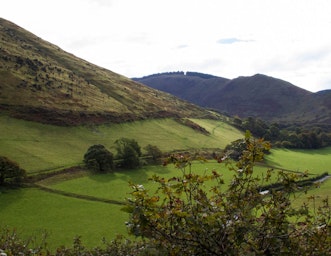
There were almost too many deals and pacts to keep track of over the two weeks of COP26. Claire Thorpe gives an overview of some of the most impactful deals, as well as what was and wasn’t included in the Glasgow Climate Pact.
The Glasgow Climate Pact and 1.5°C
The Glasgow Climate Pact – also known as the cover decision for COP26 – was adopted by all nations that are signatories to the 2015 Paris Agreement.
The agreement requests that parties revisit and strengthen their Nationally Determined Contributions (or NDCs – each country’s commitment to cutting emissions) by 2022. There is a big gap between current NDCs and the emissions cuts needed to limit warming to 1.5°C, which is recognised in the text. However, the text fails to recognise the need to align these NDCs with countries’ Long-Term Strategies, which focus on work to 2050 and beyond.
It is noted that lower income countries will be able to submit more ambitious NDCs if they have more funding and support, but there is no support offered for creating Long-Term Strategies.
Coal & fossil fuels
One of the most talked-about aspects of the Pact is the reference to coal and fossil fuel subsidies. While wording was watered down at the last minute, the need to ‘phasedown’ coal use and move away from ‘inefficient’ fossil fuel subsidies is included.
The need for a just energy transition is also recognised in the text.
Finance, adaptation, loss and damage
A particularly controversial aspect of the Pact is finance. The fact that the previous pledge of $100 billion per year for climate finance was missed is noted and countries are urged to fully deliver this through to 2025.
The text commits to double (from 2019 levels) funding for adaptation to climate change by 2025 and the creation of a work-plan to support this.
However, there is no process to engage with adaptation at political levels, or recognition that this funding must be in the form of grants, not loans which push countries into debt.
Most importantly, there is no finance or mechanism for financing loss and damage incurred by climate change. These losses and damages are being felt by those who have contributed the least to the climate crisis, and so this was widely seen as a failure.
Finalising the Paris rulebook
The rulebook on the Paris Agreement was finalised, having been delayed over the past five years. This mainly concerned transparency and carbon markets. While some loopholes were closed, many remain and aspects of this text are seen as weak.
Deals and deforestation
Climate Action Tracker showed that the deals at Glasgow, if fully implemented, would close the emissions gap by 9%. At the moment, these deals do not have policies behind them to implement them, these must be urgently created, and governments held to account to keep to their word.
Countries agreed to halt and reverse deforestation and land degradation by 2030. Over $19 billion in funding was allocated to protect forests, a partnership of 28 countries agreed to boost trade in sustainable goods, and 30 financial institutions agreed to stop investments in deforestation by 2025. There is no legally binding regulation to end support for deforestation across all sectors and all commitments were voluntary.
Methane and coal
The Global Methane Pledge, signed by 107 countries, aims for 30% reductions in methane emissions by 2030. Signatories make up close to 70% of the global economy and six of the then biggest methane emitters. There was a pledge of $330 million to assist reduction efforts for this powerful greenhouse gas. Big methane emitters, including Iran and Russia, failed to sign. Agricultural emissions are also largely missed from the Pledge, although they make up 40% of methane emissions from human activity.
This was heralded as the COP in which coal, the dirtiest fossil fuel, would be consigned to history. Over 190 countries, financial institutions and companies will phase out coal power, with 28 new members joining the Powering Past Coal Alliance. The countries of the G20 will end overseas finance for coal. A deal with South Africa will provide $8.5 billion for the country to move from coal to clean power. Vietnam will not build any new coal power stations – they were previously the country with the third largest coal pipeline. Following India’s net-zero targets, all 10 of the biggest coal power countries are committed to net zero. Together, this means that new coal power is uneconomic and the retirement of existing plants is likely to increase in pace to meet net zero targets.
Beyond Oil and Gas Alliance
For other fossil fuels, 20 countries pledged to end the funding of fossil fuel projects overseas by 2022. Ten countries, including Wales, formed the Beyond Oil and Gas Alliance, moving to stop fossil fuel production.
However, many countries claiming to be leaders on the climate refused to sign, and their reluctance will mean an increased reliance on unproven technologies to reduce emissions.
Reactions to COP26
You can read some of the CAT team’s responses to the process and decisions at COP26 in our latest blog.
- Zero Carbon Britain
- Climate Change
Related Topics
Related Pages
Related news


CAT Conversations: Sandy Stevens, CAT graduate
17th April 2025
CAT stories – Nick Parsons and Mike Russell
29th January 2025
‘The finance COP’
29th November 2024EMAIL SIGN UP
Keep up to date with all the latest activities, events and online resources by signing up to our emails and following us on social media. And if you'd like to get involved and support our work, we'd love to welcome you as a CAT member.
